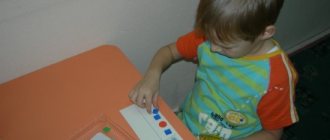Agraphia is a limitation in the ability to write that arises from dysfunction of speech processes. Agraphia can be detected in the absolute loss of a skill or in gross distortion of words, omission of letters, or a violation in the merging of syllables or letters in a word. Often, writing impairment occurs in the absence of coordination dysfunction of the upper limbs, against the background of intact mental activity. Agraphia arises as a result of damage to the posterior segments of the frontal gyrus. In children, agraphia is a manifestation of alalia (immaturity of speech function), which occurs as a result of brain damage. In addition, the deviation in question is also noted in children with speech disorders caused by problems with mastering the sound sequence of words and deviations in the sound parsing of words. In adults, agraphia is a manifestation of aphasia (speech dysfunction).
What is agraphia?
Agraphia is a disturbance or loss of the former ability to write. The disorder can occur in isolation, although it often occurs concomitantly with other neurological disorders such as alexia, aphasia, dysarthria, agnosia and apraxia. Clinically, agraphia can be divided into “central” (also called “linguistic” or “aphasic” agraphia) and “peripheral” agraphia (also called “non-linguistic” or “non-aphasic” agraphia).
To perform the act of writing, a person creates a series of "graphemes" to convey meaningful information. To write correctly, you first need to know the letters themselves, and then you need to be able to organize the letters to form correct words and grammatically correct sentences. Lesions that disrupt these processes lead to central agraphia. Then the person must know a set of coordinated movements to draw letters correctly (praxis), the ability to "mentally queue" a sequence of letters to form a whole word (motor programming), visuospatial ability to guide a writing instrument on a writing surface, and finally , have a capable motor system to perform these tasks. Disruption of these last steps involved in motor planning or motor activity of writing leads to peripheral agraphia. Please note that “peripheral” agraphia can be localized in the central nervous system when it does not directly affect the linguistic centers, for example, in the case of motor agraphia due to damage to the motor cortex of the brain, leading to paresis of the writing limb.
Symptoms
First of all, the disease is characterized by deviations in writing, which is expressed either in its complete loss, or in a violation of the structure of words, omission of syllables and letters, inability to combine letters into words, inability to write a whole word, while the intellect is not impaired and writing skills have been developed. In childhood, agraphia is a manifestation of alalia, which is formed as a result of brain damage. In parallel, there may be a violation of other purposeful mental processes in some cases.
Classification
Agraphia, or impairments in the production of written language, can occur in many ways and in many forms because writing involves many cognitive processes (language processing, spelling, visual perception, visuospatial orientation of graphic symbols, motor planning, motor control).
Agraphia has two main subgroups:) and peripheral (“non-aphasic”) agraphia. Central agraphias include lexical, phonological, global and semantic agraphias. Peripheral agraphias include allographic, apractical, motor, hemianoptic and afferent agraphia.
- Central.
Central agraphia occurs when there are both impairments in spoken language and impairments in various motor and visualization skills associated with writing. People who have agraphia and fluent aphasia write a normal number of correctly formed letters but cannot write meaningful words. Receptive aphasia is an example of fluent aphasia. Those with mild aphasia and agraphia can write short sentences, but they are difficult to read. They require a lot of physical effort to write, but lack proper syntax and often have poor spelling. Expressive aphasia is an example of a non-mild aphasia. People who have alexia with agraphia have difficulty both producing and understanding written language. This form of agraphia does not impair spoken language.
- Deep agraphia affects a person's phonological abilities and spelling memory. Deep agraphia often results from damage to the left parietal region (supramarginal gyrus or insula). People cannot remember what words look like when spelled correctly, nor can they sound them out to determine the spelling. People typically rely on their damaged orthographic memory to spell; this leads to frequent errors, usually of a semantic nature. People have great difficulty with abstract concepts and unusual words. Reading and speaking are also often impaired.
- Agraphia with Gerstmann syndrome is a written language disorder associated with the following structural symptoms: difficulty distinguishing one's own fingers, difficulty distinguishing left from right, and difficulty performing calculations. All four symptoms are the result of damage to the pathways. Gerstmann syndrome may additionally present with alexia and mild aphasia.
- Global agraphia also impairs a person's spelling memory, although to a greater extent than deep agraphia. In global apraxia, knowledge of spelling is lost to such an extent that the person can write very few meaningful words or cannot write any words at all. Reading and speaking also noticeably deteriorate.
- Lexical and structural agraphia is caused by damage to orthographic memory; these people cannot visualize the spelling of words, although they retain the ability to say them out loud. This impairment of orthographic memory may indicate a loss or deterioration of knowledge, or simply an inability to access it effectively. There is a regularity effect associated with lexical agraphia in that people are less likely to spell words correctly without a regular, predictable spelling. In addition, spelling abilities are usually less impaired. People also have difficulty with homophones. Language competence in terms of grammar and sentence writing is generally maintained.
- Phonological agraphia is the opposite of lexical agraphia in that the ability to pronounce words is impaired, but the orthographic memory of words may be intact. People often have a harder time accessing more abstract words without strong semantic representations (i.e., they have a harder time pronouncing prepositions than concrete nouns).
- Pure agraphia is a written language disorder without any other language or cognitive impairment.
Agraphia can occur separately or simultaneously and can be caused by damage to the angular gyrus.
- Peripheral.
Peripheral agraphia occurs when various motor and visualization skills involved in writing are damaged.
- Apractical agraphia is a written language disorder associated with a disorder of the motor system. It results in distorted, slow, labor-intensive, incomplete and/or inaccurate letter formation. Although the written letters are often so poorly formatted that they are almost illegible, the ability to pronounce them out loud is often preserved. This form of agraphia is caused specifically by the loss of specialized motor plans for letter formation, rather than by any dysfunction affecting the writing limb. Apraxic agraphia can occur with or without ideomotor apraxia. Paralysis, chorea, Parkinson's disease (micrography), and dystonia (writer's cramp) are movement disorders commonly associated with agraphia.
- Hysterical agraphia is a written language disorder caused by conversion disorder.
- Repetitive agraphia occurs in people who repeat letters, words, or phrases in written language an abnormal number of times. Perseveration, paragraphia and echography are examples of repetitive agraphia.
- Opto - spatial agraphia is a written language disorder defined by a tendency to neglect one part (often an entire side) of a written page, slanted lines up or down, and abnormal spacing between letters, syllables, and words. The orientation and correct writing sequence will also be affected. Optospatial agraphia is often associated with left hemisphere neglect, difficulty constructing or assembling objects, and other spatial difficulties.
Control
Agraphia cannot be treated directly, but people can be rehabilitated to regain some of their former writing abilities.[2]
To manage phonological agraphia, people are taught to remember cue words, such as a familiar name or object, which can then help them form a grapheme for that phoneme.[2] Managing allographic agraphy can be as simple as having alphabet cards so a person can write legibly by copying the letters in the correct shape.[2] There are several methods for the rehabilitation of apractical agraphia; If a person has significantly better hand and movement control when typing than when writing, then they can use technological devices. Texting and typing do not require the same technical movements as handwriting; these techniques only require the spatial arrangement of the fingers to type.[2] If a person with apraxic agraphia retains copying skills, repeated copying may help move from the highly intentional and controlled hand movements indicative of apraxic agraphia to more automated control.[2]
Micrographia is a condition that can occur with the development of other diseases, such as Parkinson's disease, and is when handwriting becomes illegible due to small writing.[5] For some people, simply writing more solves the problem.[2]
- Anagram and Copy
(ACT) uses the arrangement of the component letters of target words and then copying the target word again. It looks like a CART; the main difference is that the target words for the ACT are specific to each individual. Target words that are important in a person's life are emphasized because people with profound or global agraphia typically do not have the same memory for words as other people with agraphia.[2] Writing may be even more important for these people as it can indicate spoken language.[2] ACT helps with this by making it easier to relearn a set of written words of personal importance for use in communication.[2] - The copying and recall
(CART) method helps restore the ability to pronounce specific words that are learned through repeated copying and repetition of target words.[2] CART is more likely to be successful in treating lexical agraphia when a few words are taught than when a large group of unrelated words is taught. The words chosen can be personalized to the patient, making treatment more personal.[2] - The graphemic buffer
uses teaching specific words to improve spelling. Cue hierarchies and the method of copying and recalling specific words are used to process words in the short-term memory loop or graphemic buffer. Segmenting longer words into shorter syllables helps store words in short-term memory.[2] - The problem-solving approach
is used as a method for self-correction of phonological errors. A person says a word and tries to spell it, usually using a device like an electronic dictionary that indicates the correct spelling. This method uses stored correspondences between letters when they are intact.[2] This approach may improve access to orthographic memory, strengthen orthographic representations, or both.[2]
Causes
Central or linguistic agraphia can be caused by any lesion of the brain's cortical language centers or any of their associated subcortical structures. Classically, it occurs with stroke, which remains the most common cause of speech impairment in general. Almost any lesion affecting these areas, including trauma, tumors, and infections, can lead to central agraphia.
Neurodegenerative conditions such as Alzheimer's disease or frontotemporal dementia can also lead to central agraphia, in which case the onset is gradual with progressive worsening. Primary progressive aphasia and its subtypes are clinical neurodegenerative syndromes that are characterized primarily by slowly worsening language impairment; in particular, Alzheimer's disease and frontotemporal degeneration are implicated in the majority of these cases. Agraphia is also often observed in delirium. However, delirium is nonspecific, and the etiology of delirium is extremely varied.
As with central agraphia, peripheral agraphia can be caused by a variety of lesions anywhere from the cerebral cortex to the peripheral nerves and muscles. However, in peripheral agraphia, these lesions impair motor planning or motor output of writing.
Prevention
Prevention is any physical activity related to fine motor skills of the hands. Drawing, practice writing letters and words, gymnastics. Such exercises should be carried out constantly and as often as possible.
Treatment does not provide accurate prognosis. Much depends on the patient’s mood and the degree of brain damage. Agraphia cannot be cured on its own. Therefore, even with the slightest symptoms of the disease, you should contact medical professionals. Only a set of restorative procedures and the necessary drug treatment will help a person keep in touch with the outside world.
Related posts:
- Causes and elimination of aphasia in children and adults Aphasia in children and adults manifests itself in different ways. Methods for correcting age...
- Symptoms of semantic aphasia Signs of semantic aphasia. Features of language disorders. Prognosis for recovery. Happening…
- Impaired reading function - causes of alexia With alexia, a person looks quite healthy. Causes of occurrence. Types of Alexia...
- History, signs and symptoms of dysgraphia Symptoms of dysgraphia in children and methods of overcoming it depend on ...
Epidemiology
Data on the incidence of acquired neurological speech disorders, including agraphia, are generally limited. Stroke is considered the most common cause of acquired language impairment. One study from Switzerland found that the annual incidence of speech impairment due to first-ever ischemic stroke was 47 per 100,000 inhabitants; of these, 30% of stroke patients developed aphasia. This study included patients with agraphia, although the frequency of agraphia was not reported.
Forecasts
Agraphia does not give clear prognoses, since its causes lie not in psychological factors, but in brain damage. If doctors are able to eliminate the problem at the physiological level, then agraphia can be completely cured.
Specialists should work with the patient. The problem should not be ignored or left uncorrected. Agraphia itself will not disappear, but the person will be significantly unadapted to society. In some cases, children with agraphia manage to study with healthy children in secondary schools. If the problems are serious enough, then home schooling and attending classes with a specialist are suggested.
Agraphia cannot be eliminated on its own, especially if the causes are brain damage. Only doctors are able to identify the affected area and eliminate it.
Pathophysiology
The pathophysiology of neurological speech disorders, including aphasia and agraphia, remains incompletely understood. In general, aphasia is better studied than agraphia and serves as the most common model for studying neurological language processing. However, several reports have observed a dissociation between written and spoken language, indicating locations in the brain dedicated to writing. With that said, several brain regions involved in language processing have been identified.
Classic localization methods based on vascular lesions initially identified two major language centers of the brain: Broca's area in the dominant inferior frontal gyrus and Wernicke's area in the dominant superior temporal gyrus. These areas are supplied by the superior and inferior sections of the middle cerebral artery, respectively. The left hemisphere is the dominant hemisphere in over 95% of right-handers and over 70% of left-handers. Lesions in Broca's area typically result in inflexible language impairment; Broca's area has been shown to be associated with linguistic functions including verbal fluency, phonological processing, grammatical processing, and semantic retrieval.
Inferior middle cerebral artery lesions are commonly associated with speech fluency disorder, characterized by nonsensical speech and impaired comprehension. It was originally and is still widely believed that Wernicke's area is associated with word recognition and meaning. However, although more recent evidence suggests that Wernicke's domain is indeed related to the phonological production of language, it may not be critical for language recognition. Rather, the posterior cortical region of language, which is responsible for recognizing and meaning words that cause Wernicke's aphasia, is more diffusely distributed throughout the temporal and parietal lobes.
It is believed that there are areas of the brain dedicated to handwriting. The dominant angular gyrus is thought to be involved in the abstract transformation of verbal to visual representations of language. Although some authors suggest that they are involved in reading ability, other authors believe that this region is dedicated to the production of written language and instead propose that the nearby lateral occipital gyri causes reading impairment. Conversely, within the dominant middle frontal gyrus there is an area that has been called the "grapheme/motor frontal area" (named in reference to the proposed "Exner area" of handwriting put forward by Sigmund Exner), which has been purported to be the interface between the abstract representation of words and motor programming written speech. Based on the above location, it is likely that lesions in the dominant angular gyrus may cause pure linguistic agraphia, and lesions in the middle frontal gyrus may cause pure apractical agraphia.
While classical localization models remain clinically useful and help identify cortical regions that are critical in various aspects of language, evidence increasingly supports a network model of language processing. Functional imaging studies have shown that language functions are more diffuse than previously thought. Indeed, lesions in areas such as the cerebellum, thalamus, or even the nondominant hemisphere may mimic damage to Broca's area or the posterior language area, which includes Wernicke's area. Similarly, clinical syndromes consistent with pure linguistic agraphia have been reported in the thalamus and internal capsule.
In contrast to central agraphia, peripheral agraphia is much more varied in its pathophysiology and is often localized in one or more locations in the central and/or peripheral nervous system. The location of apraxic agraphia is not standardized and is most often documented with lesions in the frontal and parietal lobes, although lesions leading to apraxic agraphia have also been observed in the thalamus and cerebellum. The possible role of Exner's area in pure apraxic agraphia is postulated above. It should be noted that agraphia, which is part of the Gerstmann syndrome tetralogy that classically affects the posterior lobe of the dominant parietal lobe, has recently been questioned to represent a separate apractic agraphia affecting the adjacent superior parietal gyrus.
Paretic motor agraphia can occur due to lesions anywhere in the corticospinal tract and associated muscles. Micrographia is associated with parkinsonism, which itself is most often associated with lesions of the substantia nigra, but can also occur with lesions of the globus pallidus, striatum, or even the frontal lobe. Agraphia caused by tremor or chorea may occur due to damage to structures that regulate motor control, including the basal ganglia or cerebellum.
Recurrent agraphia may reflect phenomena such as catatonia or Tourette's syndrome. When this feature reflects perseverative behavior, it is thought to be primarily located in the frontal or parietal lobe. Lesions anywhere along the optic pathway or in cortical visual processing areas can lead to visuospatial agraphia. Neglect, which is usually located in the non-dominant parietal lobe, can also lead to visuospatial agraphia. Functional agraphia is complex in nature and often cannot be easily localized to any specific structure.
Dysorphography
Dysorthography is a persistent impairment of the writer’s ability to apply spelling rules when writing assignments or his speech intention. After all, written speech is a special form of speech that is very complexly organized. Written speech depends on the level of development of oral speech, but having such a basis, when carrying out the writing process, additional systems of the human brain are involved: motor analyzer, kinesthetic sensations, visual-motor coordination, spatial zones of the occipital zone of the brain for recalling the image of a letter, and logical zones frontal areas of the brain, and phonemic perception (temporal areas of Broca and Wernicke) and inter-analyzer connections, and the lexical and grammatical arsenal of a person. The process of writing in school education has another essential basis: the desire to write, the desire to master literacy. The persistent reluctance of a primary school student, insufficient attention, memory, underdevelopment of the volitional component of the personality, leads to a failure in the formation of timely literate writing skills. It is clear that if a child has organic damage to the cortical areas of the brain involved in the writing process, then he will have a written speech disorder: dysgraphia or dysorthography. Delayed maturation of these cortical zones, or disruption of their functioning, also leads to this condition
If a child in the early stages of his development suffered for a long time from colds or infectious diseases with an increase in temperature, then brain cells may suffer from this, and later dysgraphia and dysorphography may occur. Incorrect speech of others, bilingualism, insufficient attention to the development of the child’s speech in the family, and insufficient speech contacts lead to the emergence of such diagnoses. There is also a hereditary predisposition to dysgraphia, when the qualitative immaturity of individual brain structures involved in the organization of written speech is transmitted. Insufficient psychological readiness of a first-grader for school education leads to dysorthography
This is manifested in the characteristics of their personal and intellectual development. Spoiled, permissive, lack of desire to have something and work, overfed in all respects, leads to a lack of motivation to master something new. An inadequate attitude towards their abilities, inflated self-esteem, and towards the results of the work performed (lack of criticism, unreasonable praise) is the basis for the fact that such children have difficulty developing ways of productive educational and practical activities. Hence the imbalance and careless attitude towards learning. “The student’s level of self-awareness is decreasing and a sharp decrease in the tone of cognitive activity in general has been revealed. Especially in the field of linguistic phenomena.” Insufficient motivation for educational and practical activities is the leading factor characteristic of children with dysorthography. This translates into increased distractibility! Children with dysorthography do not clearly understand educational terminology; they cannot remember and mix up terms such as “sound,” “syllable,” and “word.” Finding the place in a word where a rule needs to be applied is a very difficult, sometimes impossible task! The spelling of zhi, shi, cha, shcha, chu, shchu, a soft separating sign belongs to such “mistaken places” and even in the 6th grade, students with dysorthography make mistakes in such words, that is, they do not learn the rules of Russian language graphics. Students do not know how to check their own mistakes because their self-control is significantly impaired, which does not allow them to find and correct a huge number of spelling errors and complicates the choice of how to check words. There is a method for correcting dysorthography that can influence the quality of students’ writing; it is based on the development of visual character recognition; analysis and synthesis (compare and contrast operations); optical-spatial recognition and design; speech-visual (oculomotor) functions, development of perception and reproduction of rhythm; visual and speech-auditory memory. The methods were created by scientists and speech therapists: Yastrebova A.V., Prishchepova I.V. based on research by Levina R.E. and expanded, specified by Ivanovskaya O.G., Gadasina L.Ya., Nikolaeva T.V. and Savchenko S.F.
And all this work will give better results if you influence the subconscious motivation of educational activities, which makes it possible to implement such a method as suggestive suggestion
Diagnostics
Assessing a patient's writing ability is part of a complete neurological language assessment, which also includes fluency, comprehension, repetition, and reading. A complete assessment of oral and written language is necessary to determine the cause of agraphia.
Computed tomography (CT), high-resolution magnetic resonance imaging (MRI), and positron emission technology (PET) scans can help see damage to areas of the brain where language processing centers exist.
Treatment
Correct classification of a patient's agraphia is of paramount importance for proper treatment, since treatment methods vary greatly depending on the location and etiology of the agraphia. In general, therapy in the form of speech and language therapy and occupational therapy is the cornerstone of treatment for both central and peripheral agraphia. Often, successful treatment of agraphia requires a multimodal approach involving therapy, medications, and sometimes surgery: for example, a patient with micrographia due to Parkinson's disease may require deep brain stimulation, anti-Parkinsonian medications, occupational therapy, and/or orthopedic devices to address his writing impairment. .
In addition to addressing the symptoms of agraphia, it is important to address the underlying etiology to prevent possible progression of the writing disorder. For example, a patient with a tumor causing central agraphia should be offered appropriate chemotherapy, radiation therapy, and/or surgery.
Of the various etiologies of central agraphia, the strongest evidence is for central agraphia caused by stroke. Speech and language therapy has been shown to be beneficial for speech impairment following stroke, with evidence that intensive speech and language therapy is preferable for improving writing skills. One small study of 8 patients with alexia and agraphia due to stroke showed benefit from targeted, task-specific instruction in reading and/or writing, suggesting that treatment protocols may benefit from broadly targeting a variety of specific writing disorders.
Limited evidence suggests that piracetam may be useful for agraphia in the acute setting following stroke. Memantine has been shown to be effective in post-stroke aphasia, but its effectiveness in writing disorders has not been studied. With regard to neuromodulation, evidence from small studies suggests a potential beneficial effect of transcranial magnetic stimulation on writing impairment after stroke, although larger studies are needed.
Treatment of peripheral agraphia is broader than treatment of central one and depends on the subtype of agraphia. For example, optospatial agraphia due to hemispheric neglect may benefit from prismatic lenses. Writer's cramp (focal hand dystonia) often responds to a local injection of botulinum toxin. Orthotic devices, occupational therapy, and relaxation techniques can also help with symptoms of focal hand dystonia.
Forms of aphasia
In the first days after a cerebrovascular accident, speech disorders in patients can manifest themselves in the form of total aphasia: the patient does not speak and does not understand speech addressed to him. Total aphasia after a few days or weeks can be replaced by sensory or motor aphasia: the patient begins to understand speech addressed to him, but communicates with others using a speech “embolus” - a stereotypically repeated sound combination, syllable or word, sometimes well intoned.
There are several forms of aphasia, but two main forms of aphasia can be distinguished:
- sensory
- motor









